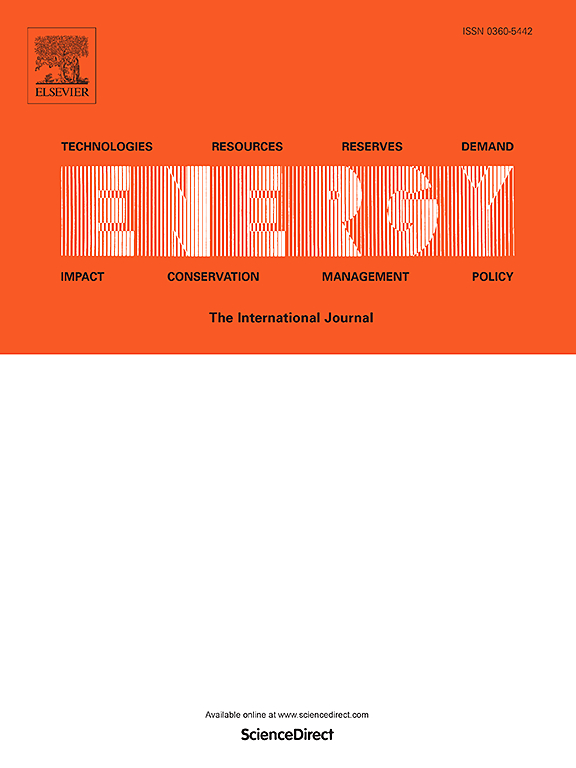System dynamics simulation model of price transmission in collaboration market of electricity, carbon, and green certificate driven by multiple policies
IF 9
1区 工程技术
Q1 ENERGY & FUELS
引用次数: 0
Abstract
The new-type power system (NTPS) serves as the foundational support for constructing new-type energy system (NTES) and achieving dual carbon goals of China, within market-oriented operation driven by multiple policies. Based on the collaboration market of electricity, carbon and green certificate (CMECG), an orderly price transmission mechanism is the key issue for NPTS. In this paper, a system dynamics simulation model of price transmission in CMECG is proposed, driven by key multi-policy factors including green electricity consumption quota (GECQ), pre-allocation quota distribution ratios (PQDR) in the carbon market and offsetting ratios of Chinese certified emission reduction (ORCCER). Firstly, a collaborative operation framework of CMECG is constructed. Secondly, the causal loop diagrams and the flowchart for price transmission of CMECG are established. Finally, adopting the research path of China between 2025 and 2035, the collaborative operation processes of CMECG are simulated. The price transmission relationship of carbon and green certificates to electricity are separately fitted and sensitivity analyses are conducted. Relevant recommendations have been put forward to promote CMECG. The results show that the transmission of electricity price influenced by carbon price and green certificate follows linear and exponential relationships respectively, and that GECQ and PQDR have the most significant influence on carbon price, whereas the ORCCER has the most significant influence on green certificate price. The price transmission model of CMECG in NTPS based on system dynamics has obvious theoretical and practical significance for mechanism study of CMECG under multi-policies.
求助全文
约1分钟内获得全文
求助全文
来源期刊

Energy
工程技术-能源与燃料
CiteScore
15.30
自引率
14.40%
发文量
0
审稿时长
14.2 weeks
期刊介绍:
Energy is a multidisciplinary, international journal that publishes research and analysis in the field of energy engineering. Our aim is to become a leading peer-reviewed platform and a trusted source of information for energy-related topics.
The journal covers a range of areas including mechanical engineering, thermal sciences, and energy analysis. We are particularly interested in research on energy modelling, prediction, integrated energy systems, planning, and management.
Additionally, we welcome papers on energy conservation, efficiency, biomass and bioenergy, renewable energy, electricity supply and demand, energy storage, buildings, and economic and policy issues. These topics should align with our broader multidisciplinary focus.
 求助内容:
求助内容: 应助结果提醒方式:
应助结果提醒方式:


